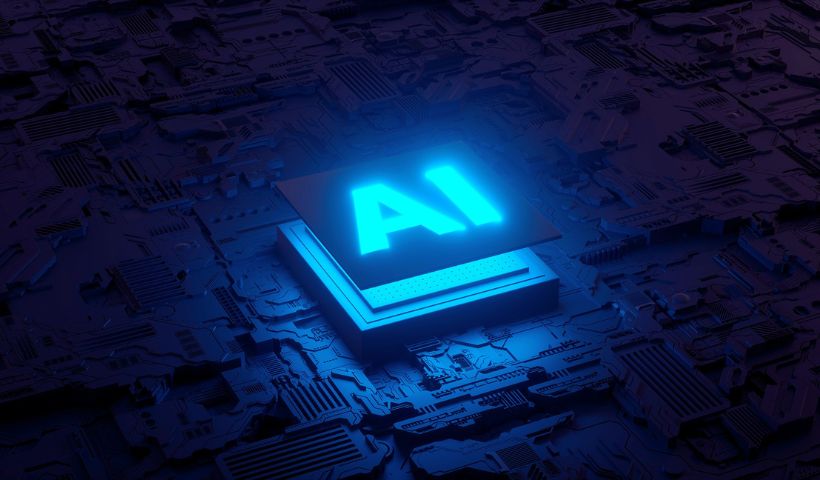Cybersecurity today presents some unique challenges for companies with a vast attack surface, millions of devices, hundreds of attack vectors, great quantities of data, and not enough skilled security professionals. It has moved beyond a human-scale problem. Companies need to take advantage of deploying AI and automation programs. This enables them to detect cyber threats quickly and appropriately respond to them.
Table of Contents
Better Threat Detection
Over the next few years, cybercriminals will increasingly use AI, machine learning, and automation to expedite their attacks. For example, they are using methods like generative adversarial networks to produce new types of attacks that can evade current cyber defenses. If companies want to defend against these attacks, they will have to stay ahead of them.
The first step is to detect threats, and AI is capable of tracking down a wide variety of cyber threats – from malware to risky behavior that might result in a phishing attack. AI is well suited to finding patterns in big data. Being able to detect threats rapidly can help companies to protect their networks from permanent damage.
Predictive analytics to help pick up anomalies is one of the main uses of AI in cybersecurity. AI-based cybersecurity systems can provide up-to-date knowledge about global threats and those specific to a particular industry. This means companies can make more informed decisions based on what is likely to be used to attack them.
Malware Detection
AI surpasses traditional systems in detecting threats and significantly extends the scope of threat detection. It is being used to detect malware which is malicious software that exploits vulnerabilities in a victim’s computer or network. Cybercriminals will compress or alter the format of a malicious file to avoid detection by antivirus software. They rely on companies using legacy security solutions that don’t scan embedded content.
If companies want to protect against malware attacks, they need to use advanced threat protection solutions. Training the algorithms AI systems use to make it possible to detect even the smallest characteristics of malware before it enters the system. Approaches like next-generation sandboxing can uncover threats underlying any nesting level inside content.
Phishing And Spam Detection
Phishing uses sophisticated social engineering and technical subterfuge to steal confidential data and money. There are many types of phishing, but the process is usually initiated with an email which scares the user into taking some action.
Due to obstacles in the blacklists-based approach to detection, AI is increasingly being used. Deep learning uses large data sets to train a deep neural network. It can learn how to complete tasks like classifying images over time. Deep learning models can detect emails with hidden content, communication from recently formed domains, and image-based emails that are hard to detect. This helps with the detection of a phishing attempt.
Ai can also detect internet traffic patterns linked to spamming. By applying machine learning algorithms to network traffic, it is possible to detect previously unknown attacks and those modified to evade detection.
Bot Identification
Bots can be dangerous when they take over accounts with stolen credentials, create bogus accounts, or commit data fraud. It’s impossible to target automated threats using manual responses alone. AI and machine learning can help companies to distinguish between good bots, evil bots, and humans.
Using AI makes analyzing a significant amount of data possible in a short space of time. This means cybersecurity teams have the insights to adapt their strategies to a landscape that changes all the time. By determining the intent of website traffic, IT security teams can stay ahead of bad bots.
Breach Risk Prediction
AI-based systems feed new levels of intelligence to human teams across many different cybersecurity categories. The IT asset inventory is an accurate and detailed record of all users, applications, and devices with access to information systems. By creating profiles of users, assets, and networks and creating a history of behavior, AI can detect and respond to departures from the established norms. It can predict how and where companies are most likely to be compromised.
By using predictive insights, companies can plan and allocate their resources accordingly. Fast response to incidents is possible and identifying root causes enables companies to deal with their vulnerabilities. They can configure and improve controls to offer more resilience.
Better Endpoint Protection
AI can play a crucial role in endpoint protection. Virus definitions often lag for various reasons, such as failure to update an antivirus solution. Signature protection won’t work if a new kind of malware attack happens.
AI-driven endpoint protection establishes a baseline for the endpoint through a repeated training process. Anomalies are flagged so action can quickly be taken. This can provide proactive protection against threats instead of waiting for signature updates.
Reduce The Number Of False Positives
At the moment, AI and machine learning are mostly used for automating many of the tasks that human security analysts currently do manually. This includes automatically detecting unknown code repositories, servers, workstations, and other software and hardware on a network. AI can sift through terabytes of data much more effectively than humans and identify patterns that humans aren’t able to see.
For those who fear AI replacing human jobs, it is more a case of humans supervising automation and working with it rather than being replaced by it. In the security field, using AI reduces the number of false positives. Too many false positives take away time from fixing real issues. Reducing false positives can speed up the process of detection and response.
Conclusion
AI technologies learn over time and draw from the past to identify new types of attacks. They are becoming a must-have technology for security purposes. Humans can’t scale sufficiently to secure the attack surface. AI offers much-needed threat identification to minimize the risk of breaches and enhance security. It can proactively identify malware attacks, discover and prioritize risks and much more. It may have certain disadvantages, but it is helping to drive cybersecurity forward, so companies are more secure.

